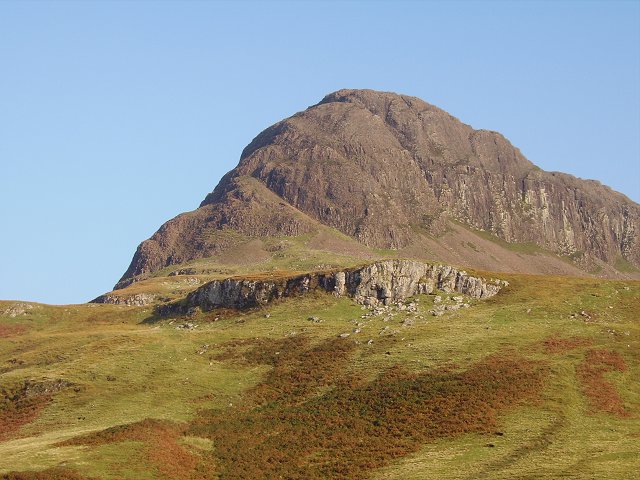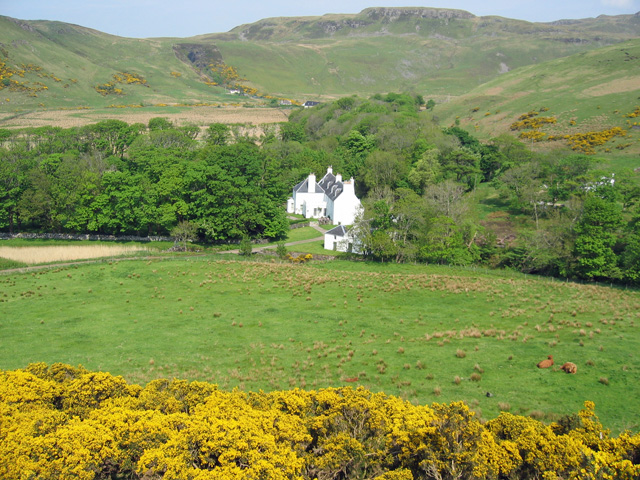Talisker on:
[Wikipedia]
[Google]
[Amazon]
Talisker ( gd, Talasgair) is a settlement on the
 In 1820 Donald Macleod, 6th of Talisker, a major in the 56th Regiment, sold his interest in Talisker and emigrated to
In 1820 Donald Macleod, 6th of Talisker, a major in the 56th Regiment, sold his interest in Talisker and emigrated to
 Talisker Farm now extends to . The house, a handsome Georgian mansion, stands among old trees, just to the west of its 17th-century predecessor. Begun in 1717, it was much extended in the 18th and 19th centuries. It has been
Talisker Farm now extends to . The house, a handsome Georgian mansion, stands among old trees, just to the west of its 17th-century predecessor. Begun in 1717, it was much extended in the 18th and 19th centuries. It has been
Minginish
Minginish ( gd, Minginis) is a peninsula on the Isle of Skye in Scotland. It is situated on the west coast of the island and runs from Loch Scavaig in the south (which separates Minginish from the Strathaird Peninsula), along the western coast ...
peninsula in the Isle of Skye, Scotland.
History
Talisker was for centuries a possession of theClan Macleod
Clan MacLeod (; gd, Clann Mac Leòid ) is a Highland Scottish clan associated with the Isle of Skye. There are two main branches of the clan: the MacLeods of Harris and Dunvegan, whose chief is MacLeod of MacLeod, are known in Gaelic as ' ("se ...
. For nearly two hundred years it was associated with a cadet branch of the chiefly line, founded by Sir Roderick Macleod, 1st of Talisker (1606-1675). Sir Roderick was the second son of Rory Mor Macleod (d.1626) and Isabel, daughter of Donald Macdonell, 8th of Glengarry. Along with his brother, Sir Norman Macleod of Bernera, he was knighted in 1661 for his services to the royalist cause. He married first a daughter of Lord Reay
Lord Reay, of Reay in the County of Caithness, is a title in the Peerage of Scotland. Lord Reay (pronounced "ray") is the hereditary Clan Chief of Clan Mackay, whose lands in Strathnaver and northwest Sutherland were known as the Reay Country. ...
and secondly Mary, daughter of Lachlan Og Mackinnon of Mackinnon.
John Macleod, 2nd of Talisker, who died in about 1700 was the subject of an elegy, ''Cumha do Fhear Thalasgair'' (“Lament for the Laird of Talisker”), written by the blind harpist, Ruaidhri Dall MacMhurich.
Johnson
Johnson is a surname of Anglo-Norman origin meaning "Son of John". It is the second most common in the United States and 154th most common in the world. As a common family name in Scotland, Johnson is occasionally a variation of ''Johnston'', a ...
and Boswell visited Talisker in 1773. Johnson’s ''Journey'' reveals him to have been impressed by his host, Talisker’s then tacksman
A tacksman ( gd, Fear-Taic, meaning "supporting man"; most common Scots spelling: ''takisman'') was a landholder of intermediate legal and social status in Scottish Highland society.
Tenant and landlord
Although a tacksman generally paid a yea ...
, John Macleod, 4th of Talisker, but less so by the location itself:...our next stage was to Talisker, the house of colonel Macleod, an officer in the Dutch service, who in this time of universal peace, has for several years been permitted to be absent from his regiment. Having been bred to physick, he is consequently a scholar, and his lady, by accompanying him in his different places of residence, is become skilful in several languages. Talisker is the place beyond all that I have seen, from which the gay and the jovial seem utterly excluded; and where the hermit might expect to grow old in meditation, without possibility of disturbance or interruption. It is situated very near the sea, but upon a coast where no vessel lands but when it is driven by a tempest on the rocks. Towards the land are lofty hills streaming with waterfalls. The garden is sheltered by firs, or pines, which grow there so prosperously, that some, which the present inhabitant planted, are very high and thick.Boswell’s own ''Journal'' confirms Johnson’s description in its physical essentials, but concludes more charitably that “Talisker is a better place than one commonly finds in Sky”.
 In 1820 Donald Macleod, 6th of Talisker, a major in the 56th Regiment, sold his interest in Talisker and emigrated to
In 1820 Donald Macleod, 6th of Talisker, a major in the 56th Regiment, sold his interest in Talisker and emigrated to Van Diemen’s Land
Van Diemen's Land was the colonial name of the island of Tasmania used by the British during the European exploration of Australia in the 19th century. A British settlement was established in Van Diemen's Land in 1803 before it became a sepa ...
(financed by his father-in-law, Alexander Maclean of Coll
Coll (; gd, Cola; sco, Coll)Mac an Tàilleir (2003) p. 31 is an island located west of the Isle of Mull in the Inner Hebrides of Scotland. Coll is known for its sandy beaches, which rise to form large sand dunes, for its corncrakes, and ...
). He travelled with 36 Highlanders of his connection and secured a grant of .
In 1825, Hugh MacAskill took over the Talisker estate and completed the clearance process begun under his predecessor. Five years later, he founded the Talisker distillery
Talisker Distillery is an island single malt Scotch whisky distillery based in Carbost, Scotland on the Minginish Peninsula on the Isle of Skye. The distillery is operated by Diageo and Taliskers’ 10 year old whisky has been nominated as ...
, which is in fact located some away from Talisker at Carbost, Loch Harport. MacAskill gave up his lease of the Talisker lands in 1849.
Geology
The estate includes two hills (Preshal More, which was climbed by Boswell, and Preshal Beg) of considerable geological interest. As described by B.R.Bell and I.T.Williamson:At the base of the twin summits of Preshal More and Preshal Beg, near Talisker, the laterally-restricted Preshal Beg Conglomerate Formation crops out. These heterogebeous sedimentary rocks include debris flow (?lahars), alluvial fan and fluviolacustrine facies volcanoclastic deposits accumulated with a substantial and long-lived valley drainage system which developed upon the Glen Oraid Lava Formation surface. Subsequently this topography was inundated by two thick (at least ) intracanvon flows of compositionally distinctive tholeiitic basalt belonging to the Talisker Lava Formation. These flows mark a significant change in the chemical signature of the lava sequence and have a strong compositional affinity with the various intrusive units of the Cuillin Centre. … the Preshal More flows may represent the only remnants of an originally significant lava shield that developed above the Cuillin centre.
Site of Special Scientific Interest
NatureScot
NatureScot ( gd, NàdarAlba), which was formerly known as Scottish Natural Heritage, is an executive non-departmental public body of the Scottish Government responsible for the country's natural heritage, especially its natural, genetic and ...
has designated Talisker as a Site of Special Scientific Interest. The designation is based in part on Talisker's geological features (described above), but in part also on the presence of two rare species of Zygaenidae
The Zygaenidae moths are a family of Lepidoptera. The majority of zygaenids are tropical, but they are nevertheless quite well represented in temperate regions. Some of the 1000 or so species are commonly known as burnet or forester moths, oft ...
, the Talisker burnet moth and the transparent burnet moth.
Literature
Sorley Maclean's poem ''Tràighean'' (fromDàin do Eimhir
''Dàin do Eimhir'' () is a sequence of sixty poems written in Scottish Gaelic by Sorley MacLean. Considered MacLean's masterpiece, the poems deal with intertwining themes of romantic love, landscape, history, and the Spanish Civil War, and are ...
) begins with a powerful evocation of the physical features of Talisker:
Nan robh sinn an Talasgar air an tràigh far a bheil am beul mòr bàn a' fosgladh eadar dà ghiall chruaidh, Rubha nan Clach 's am Bioda Ruadh, sheasainn-sa ri taobh na mara ag ùrachadh gaoil 'nam anam fhad ‘s a bhiodh an cuan a'lìonadh camas Thalasgair gu sìorraidh: sheasainn an siud air lom na tràghad gu 'n cromadh Priseal a cheann àigich.
If we were in Talisker on the shore where the great white mouth opens between two hard jaws, Rubha nan Clach and the Bioda Ruadh, I would stand beside the sea renewing love in my spirit while the ocean was filling Talisker bay forever: I would stand there on the bareness of the shore until Prishal bowed his stallion head.
Present day
 Talisker Farm now extends to . The house, a handsome Georgian mansion, stands among old trees, just to the west of its 17th-century predecessor. Begun in 1717, it was much extended in the 18th and 19th centuries. It has been
Talisker Farm now extends to . The house, a handsome Georgian mansion, stands among old trees, just to the west of its 17th-century predecessor. Begun in 1717, it was much extended in the 18th and 19th centuries. It has been listed
Listed may refer to:
* Listed, Bornholm, a fishing village on the Danish island of Bornholm
* Listed (MMM program), a television show on MuchMoreMusic
* Endangered species in biology
* Listed building, in architecture, designation of a historicall ...
since 1971 with the following description:It has an early-18th-century core with later additions; harled, ashlar dressings. It has two storeys and attic, 6 wide bays; 2-bay piended projecting wing to front (west) elevation with porch in left re-entrant, a single-storey addition with 5 long multi-pane windows in right re-entrant and bow window to centre of wing; it has crenellated parapets, 5 piended dormers with decoratively carved wood jambs; 2 stair windows to rear; 12-pane and lying pane glazing; end and ridge stacks; slate roof. Interior: projecting front wing (circa 1780) contains dining room at ground floor and drawing room above. Original ornate plaster ceiling in drawing room. Dining room plaster ceiling dates from 1865, when the bow window was added.The shore is accessible by foot-path and is a popular destination for walkers:
Talisker Bay is a beautiful beach of stones and sand, best visited at low tide. There is both black and white sand on the beach, often mottled together to create patterns. The northern side of the bay is hemmed in by vertical cliffs and an impressive waterfall, whilst the southern side is closed off no less impressively by a great sea stack.Walkhighland’
website
(accessed on 22 February 2011)
References
{{Skye Populated places in the Isle of Skye History of the Scottish Highlands Clan Macleod Highland Estates